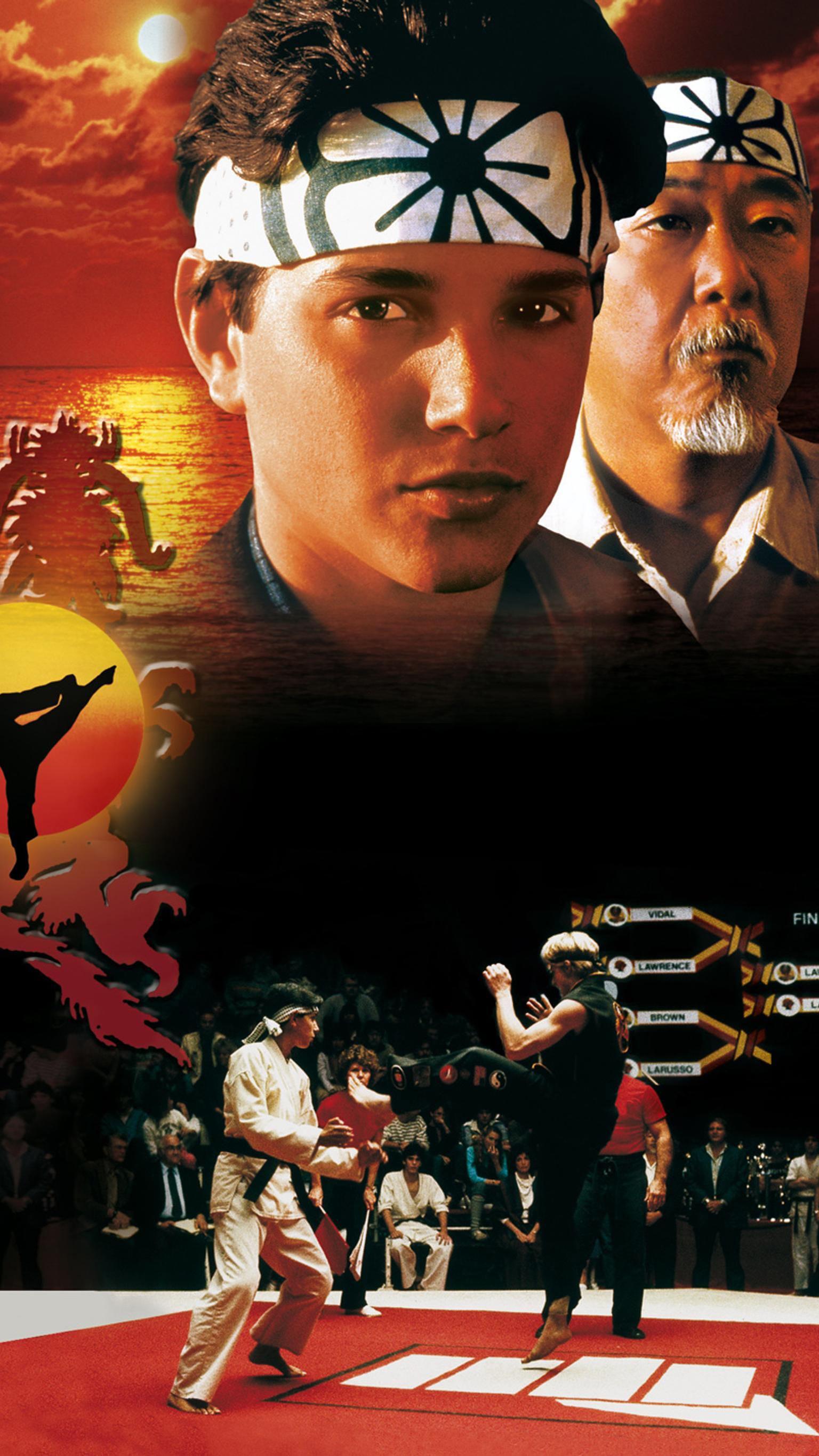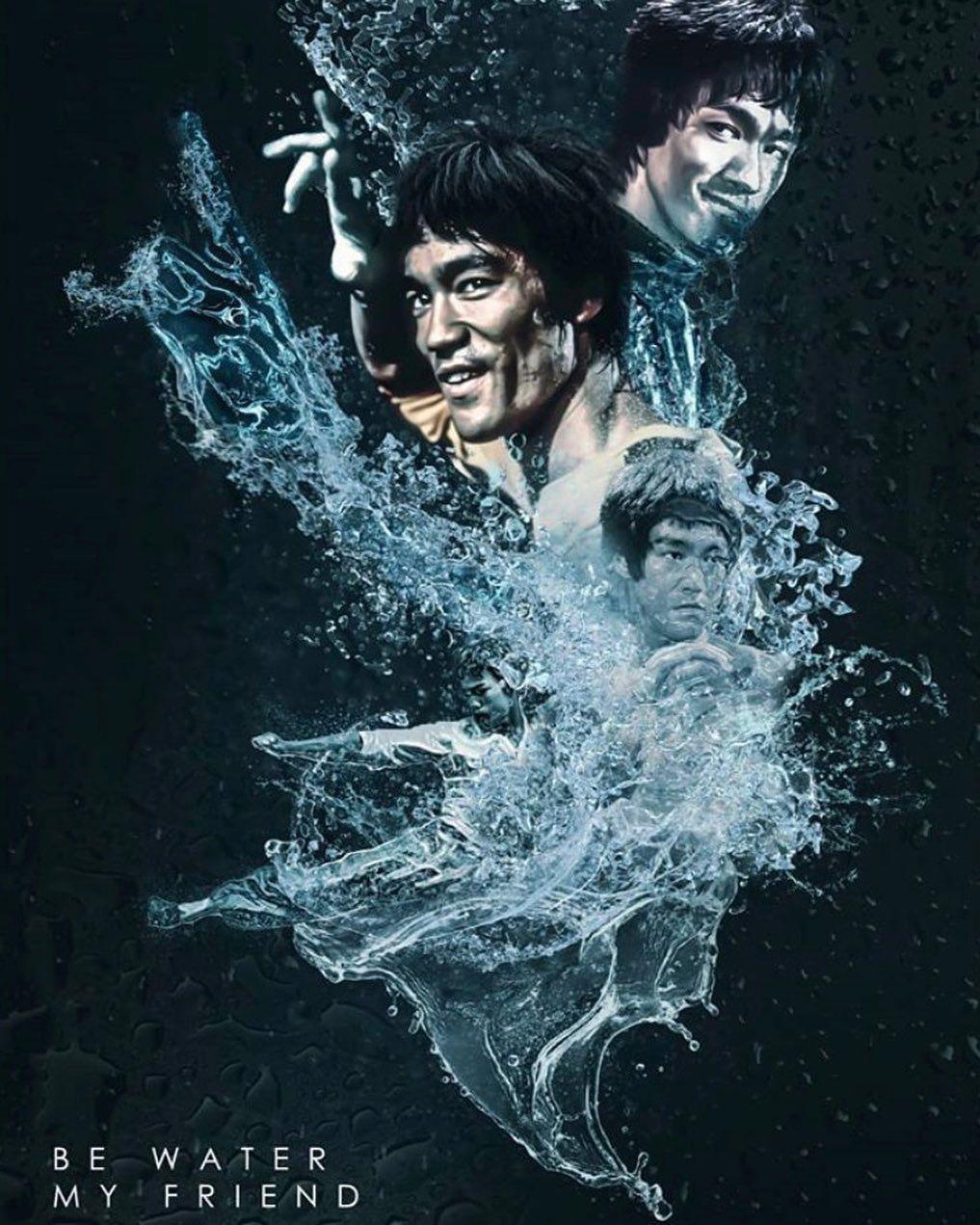
19 minute read
GM CLINTON ROBINSON (P 2 SM Guy E. Larke
'walking brother'—was bathing on the shoreline when he saw a whooping crane, lit up, and began spreading the word. sacred text. It is also worth mentioning that the multiple clans that inhabited Okinawa at that time - 36, according to legend - already practiced martial arts; that community could have been transmitting the details of what would later be compiled in the Bubishi. Be that as it may, the result of the Bubishi transmission was an entirely new martial art, based on Chinese traditions but transformed into a unique style when the Meiji Restoration established military rule in Japan in 1868. Okinawa— already occupied for centuries by the Japanese forces— became an official part of the Japanese empire and assumed much of its cultural burden. Karate-jutsu becomes Karate-Do The Japanese had already developed Kendo and Judo ('the Way of the Sword' and 'the Way of the Hand', respectively) and for them the Sino-Okinawan hybrid of Karate-jutsu —as it was sometimes called— needed to become into something fully Japanese. The original characters for the martial art were 唐手 道, which means 'martial art of the Tang'; the name would be a reference to the Tang dynasty, which at the time was a common way of referring to the Chinese. In fact, the Chinese still refer to neighborhoods in their country as ‘唐人街’, which means “streets of the Tang”. In Japanese, this symbol is pronounced 'kara', but the Meiji officials decided to remove this hybrid and change the character from 唐 to 空. The new character is pronounced 'kara' the same, but means 'empty', and therefore removes the reference to China – thus completing the transformation of the new martial art on a linguistic level as well. So far, Japan had already endorsed this new martial art. The evolution, however, did not stop there. When martial artists after World War II tried to organize their own martial style into a coherent system, they turned to Okinawa and the Bubishi. The karate forms of the islands became the basis for what would eventually become Tae Kwon Do, another martial art that has swept the world and seeped into the mixed martial arts game. The resemblance between the five Shaolin ancestors of Kung-fu and modern Karate is scant, and even more so with contemporary Tae Kwon Do. At every step of the way, beginning with the initial escape from the Shaolin temple in 1644, this martial art has changed and adapted to the environment, people, and time. At the center of this ever-evolving tradition remains a foundational book: the Bubishi. The infinite interpretations of the numerous teachers who read its pages have offered an immense richness to an already very rich text. No wonder the Bubishi spends much more time discussing metaphysics, medicine, and behavior than fighting: this isn't just any tome, it's a holy book!
Gerardo Balves 7th Dan Kobayashi-ryu Kyudokan Coordinator of the International Group of Dojos Kyudo Mugen Kyudokan https://www.facebook.com/gerardo. balves
Advertisement
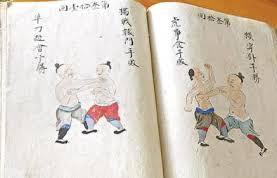
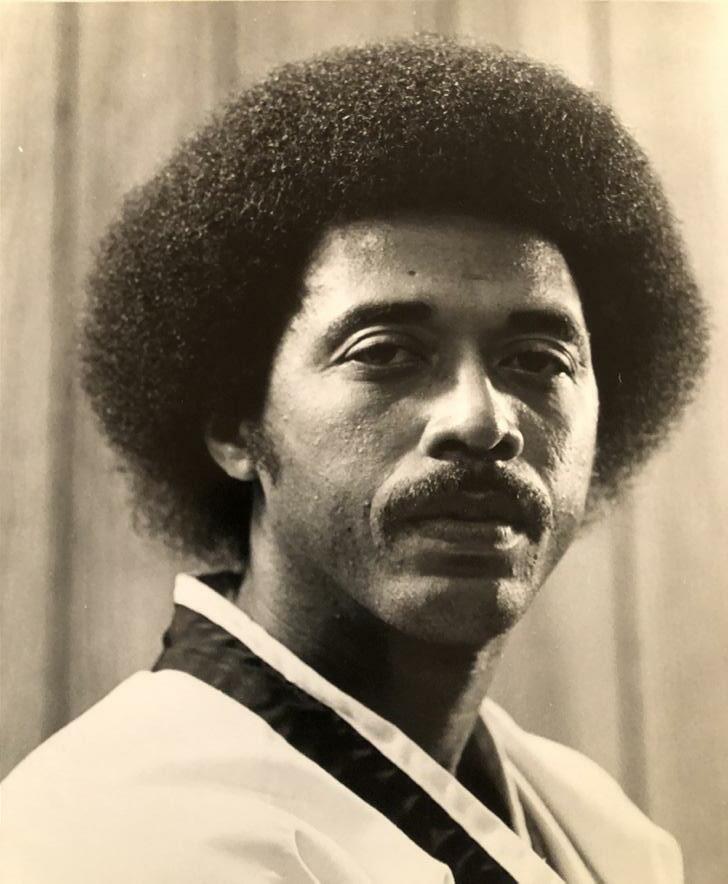
The Amazing Odyssey of GM Clinton Robinson Part 2 – A Black Dragon Awakens!
By Sr Master Guy Edward Larke
Robinson - So rather than being reassigned back to Sacramento, I ended up getting stationed in Taiwan. Quite honestly, I have to say that it was a place that I didn't want to go. I didn't want to leave the country. I mean, I was where I was. That was Taiwan, at that time. Taiwan was very kind of simple, I'll tell you. Very similar to Korea, because I also went to Korea back around that time.
Most of the people were doing ITF Taekwon-Do in Taiwan, because mostly of the Korean military instructors out of Vietnam and other places introduced TaekwonDo there. So, Taekwon-Do was at a very high level. In Taiwan. I trained primarily in a city called Taichung with the guy by the name of Ik Moo Kang. He was a great instructor with whom learned a lot of things that they were not doing in the United States. I mean, Taekwon-do was evolving. At that time many of the instructors in the United States had not returned to Korea, when they were doing the new curriculum. So, we were basically doing old-style workouts or what can be referred to as nearly more of Japanese karatetype stuff. We had four kicks: front kick, side kick, what I would call a turning kick and a back kick. Then we did those four kicks, jumping as well. There were no lead leg kicks or anything.
So, I get to Taiwan and I'm sparring with a guy and I got hit with a hook kick to the back of the head, I'm gonna Oh my gosh. Because I'm like, you didn't just bring your foot up hit me behind here. So how do you learn this? So, I really wanted to train there with him. Later they entered me in a competition. There was actually a National Taiwan Taekwon-Do Championship, and it was there was me and maybe two other foreigners. Surprisingly, I won the championship. So that was shocking to me. But it got me a lot of publicity there. Then they asked me to begin teaching.
Larke - What do you think was your key advantage or edge?
Robinson - I think my head or my attitude. You know, I think I think there were a lot of guys in that competition certainly had superior skill sets. I was in, for lack of a better word, had been in real fights. For protection we had the hogu’s with the bamboo inserts. We also had to share one groin cup. We wore them on the outside. Yeah, that that was the order of the day. So, Guy, I did that and I continued to train and I think my skill set increased. Robinson- I tested for second Dan, in Taiwan, in 1971.
Larke - What was testing like in Taiwan?
Robinson – Oh let me tell you, my friend, the testing was so difficult. Two things occurred to me upon completion, that testing number one, I did not pass this test. Number two, if I did, I'll never test again. Because it's got to be, it's gotta get more difficult. I literally had to sleep in the bathtub that night. I mean, my uniform had been ripped off. We did five-on-one sparring. After My conclusion was that the test was more about how much of a butt whipping you could take, as opposed to keeping going and not giving up. So that's what I felt at the end of it all. And I'll never forget, the instructor presented me with a Second Dan certificate. Oh, my gosh, thank you, sir. I know, I'm not worthy. That was a wonderful experience. I mean, I did not like it as it happened. But in retrospect, I see that having that type of experience, and that foundation was critical in allowing me to continue in many
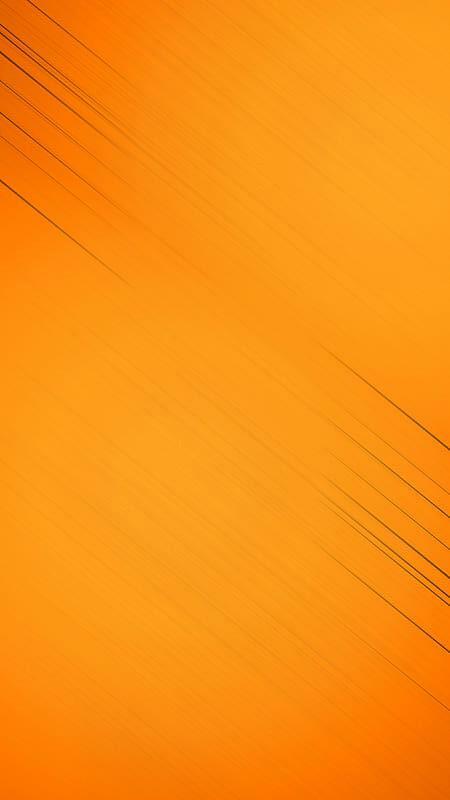
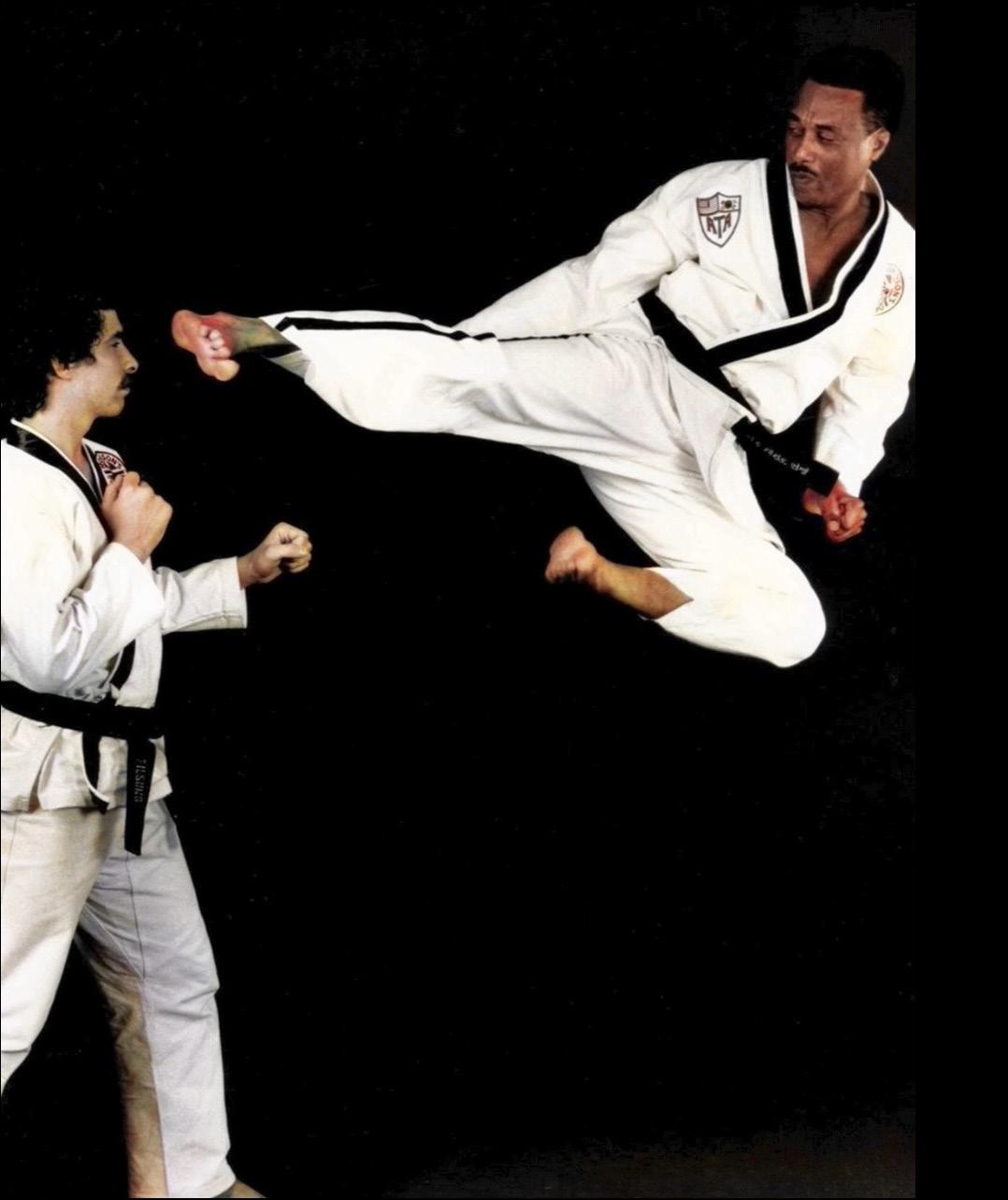
So, after that, I again entered the Taiwan National Taekwondo Tournament and won it for the second time, in my particular weight class, which was about 145, 150 (pounds) back then. And from there, a group of college students went to Chinese college students approached me about teaching a class at a local university. So, I taught a class at a place called Donghai University, which was in Taichung City, and it's still in existence. It's well known for their Taekwon-do practitioners. Now, also, as a result of that, you know, when you're young you don't think about certain things. I actually appeared in quite a few Chinese magazines, but since I couldn't read Chinese and well, What the heck am I gonna do with this stuff? You know, not thinking, Well, gosh, maybe this would be useful later on to show my kids or grandkids or someone.
But as a result of that, I got approached by a Chinese movie production team. I mean, I was sleeping These guys come to my house and knock on the door and I open the door. I recognize these guys. They were movie people. What were they doing in my house? They said, We'd like to cast you in this movie. Wow. Why the hell not? And that turned out to be an experience because, but then again, it was a learning experience, because I got to see how things were set up and how they develop these fight scenes, how they practice and how you spliced everything together to make it work.

Larke - Could I get that name from you again? I know you sent it to me a long, long time ago,
Robinson - It was called The Black Dragon Versus the Yellow Tiger. More people have seen that than I ever imagined.
Conveniently for me when I arrived, and I'll tell you before, before I get to coming back to Sacramento, but I found out about the First World Taekwondo Championship that was taking place in Seoul in May of 1973. So, with that in mind, I mentioned to my base commander, Hey, they have a huge taekwondo event. I wonder if I could get some military orders to go? Because there was nothing specific sent out about this. I mean, different countries knew about it. But individuals weren’t made aware of it. So, my base commander said, Okay, we'll issue some orders. Perhaps you can represent the military in this competition. Fantastic! So that required taking a military hop. I don't know if you're familiar with how those work. But if they got seats on the plane, you can go. If they don't, you don't go. So I get the orders. Then I’m off to Korea. I ended up in the Philippines, in Angeles City. This was when Marcos was the president. As a matter of fact they had martial law in Korea also. But I got stuck in Philippines and stayed at a hotel there and it cost me about 1 dollar 50 cents a night! I will tell you the hotel was amazing. I mean, the first time I'd ever seen anything like this. To take a shower, there was a faucet like you have in your backyard. That was inside. You had a big pot of water. You put water in the pot, wash yourself, rinse yourself off and you're done. So, wow. I ended up staying there for three days. I was afraid I would make the competition. Then suddenly, there was an opening. It was supposed to fly into Seoul. I think airport for that time was called Gimpo . Well, Gimpo airport was closed. So, the plane got diverted to Daegu City (in the south). That was my first encounter with Oh Duk Kwan. I never heard of that one. So that was a military version of Taekwondo. So not speaking Korean, I had a hard time trying to get to Seoul. So, I forget how long it took. We went to Seoul. After we get there, I get a room at the Seoul YMCA as they had lockers there and you can put your stuff in and look around. Then here was the matter of figuring out how to get to the Kukkiwon which was pretty easy to find back then because it was the tallest building. You could see that thing from miles around. I mean, there was no development around it whatsoever. It was like open fields. We went up there. Wow, it was fantastic,
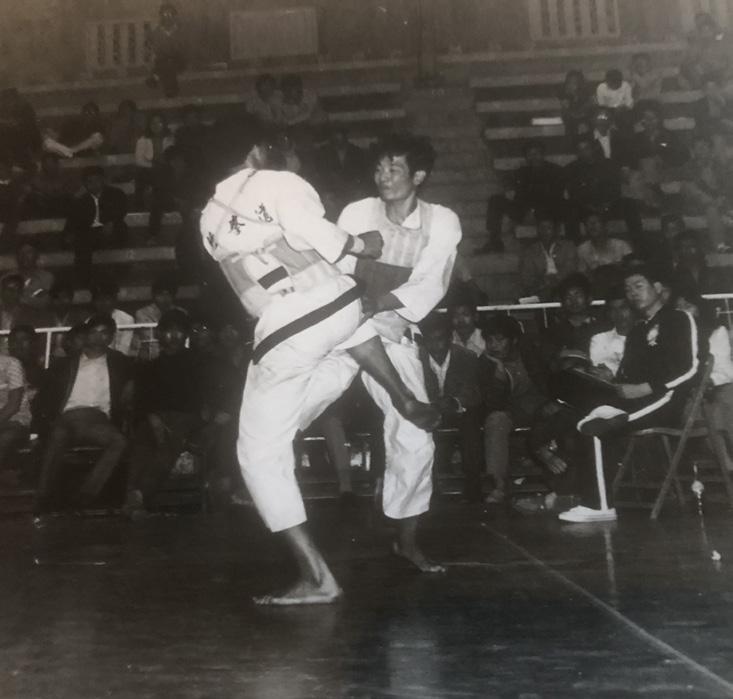
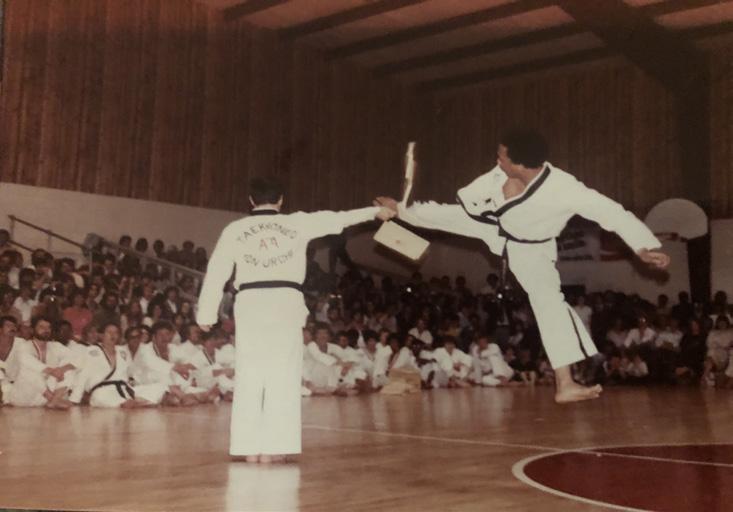
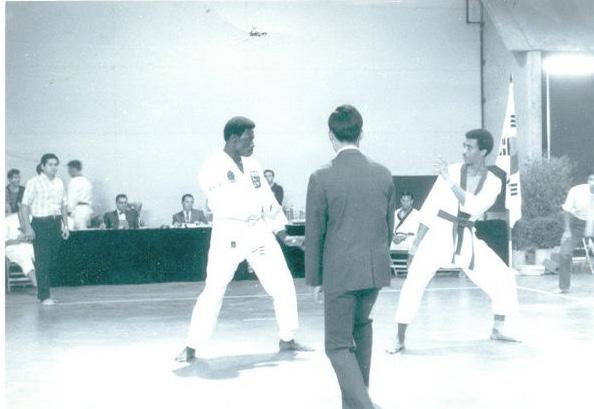
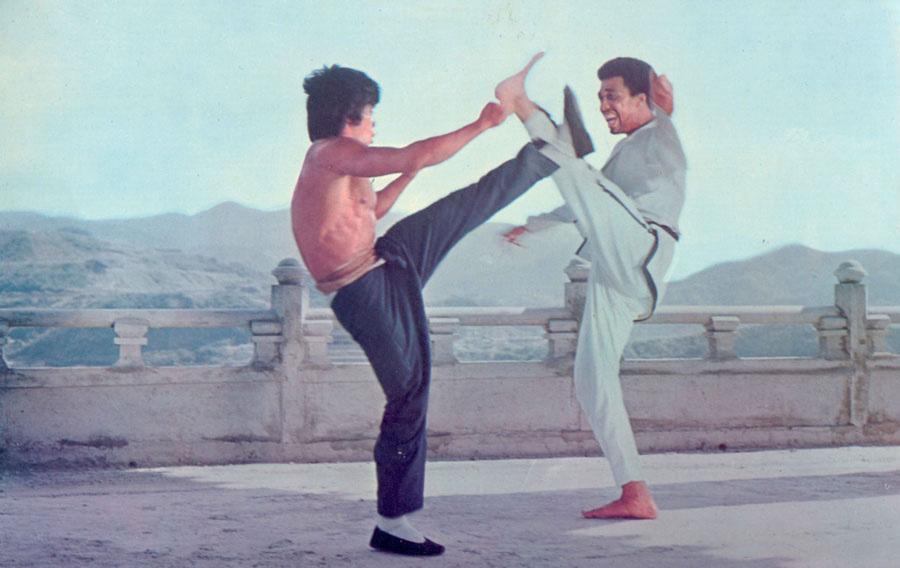
because they just finished building it in 1972. I recall that there were only 19 countries participating in this world championship, you know, and so, I started looking around for okay, how can I get involved here? So, I go and they say, Number one, there are no individual entries. You can’t come in here, and just enter the tournament. Plus, the competition already started. We're not going to rearrange anything. So, I ran into my instructor, Master Kang who was there with a US team. By the way, a lot of people are not aware the US had three teams at that competition. You had a West coast, the Midwest and the East Coast. Now, from my recollection, the most talented group was from the East Coast. You had guys like Gil Hayes, Mike Morin, extremely talented guys. They were on the East Coast team, and they did a great job. Matter of fact, I think that in my opinion, Mike Warren lost to a Korean gentleman. To this day I think that was quite unfair. Mike Morin was one of the better fighters I had ever seen. It's just tremendous. But overall, the competition was really, really good. The dominant countries were Korea, Mexico, the US and Chinese Taipei, called the Republic of China back then. I did have an opportunity to watch the competition firsthand, because my instructor that was actually the master instructor from Taiwan, invited me to sit on the bench with the Chinese team. So, I got a really close-up view of the competition. There was some great competition there. I mean, it was it was inspiring to the point of like, wow, let's do this again.
But after that, I got my third Dan. I've got a Kukkiwon certificate that was hand written. I think I may have been one of the earliest foreigners to get a Kukkiwon certificate.
Larke - Did you test in Korea for that?
Robinson - No, I actually tested for it in Taiwan. I had no idea what the heck the Kukkiwon was. The instructor master role. Yeah, I had my Chinese Taekwondo Association certificate then they brought me this other certificate. Wow, this is good. That's the building. I watched the World Championships. I was really happy about that. So I had a test in 73, and I got my Kukkiwon certificate in 1974. So I was excited. Plus, I had learned so many things. By this time. Also, I'd gotten married. By then it was time to return to United States and I ended up in Kansas City. And I was excited about Taekwon-do. So, I visited various schools in Kansas City, because I wanted to continue my training.

Larke - How did Taekwon-do change your character, your personality, and whatnot?
Robinson - You know, it was giving me more confidence is how I would describe it. The ability to overcome obstacles, I mean, it instilled in me a belief that nothing was impossible. That I can do anything. You have to be persistent. You may not necessarily get immediate results, you know, but you have to be consistent in trying to achieve whatever goal it is that you set on. I have to admit that along the road, you know, things got a little tough, training. At one point, I actually wanted to quit. I'm really glad you asked that question because when I was it was in Sacramento as a red belt, I was sparring with Byung Yu to be exactly. It was like he selected me as a sparring partner every night!
Larke - That's pretty amazing!
Robinson - Yeah. I mean, I thank him now because it really elevated my skills. But I left that school on this one night and thought, It doesn't matter. I'm never going back here again. And then Byung Yu hadn't been here that long. So, for about two weeks, I didn't go to practice. I told my mother, I said, Look, Mom, if any Korean people call the house, I am not here. Because I figured they tried to catch up with me.
So sure enough, one day, my mom says, The phones for you. And I go ahead and get the phone. It's Mr. Yu. Where are you at? I said, Well, heck, I got car problems. Then he scares me by saying, You want me to come pick you up? Oh, hell no. I thought. This guy has probably never drove a car in his life. I'll tell you what, Mr. Yu. I think I can be there in a a couple of days. I saw the problem. But I mean, I look at that, even in terms of my teaching students today that everybody gets discouraged. Sometimes, as an instructor, you say, Well, guys, I'm here. And it's their choice whether to show up or not. I've arrived at the conclusion that sometimes when people get discouraged, you got to reach out and offer them a hand. You got to pull them up. You can't let them slip off the mountain. Because I'm sure Byung Yu’s calling me kept me involved. Because I mean, heck, I degraded myself so much because his skill was so far superior to mine. I thought I’d never accomplish that. But I mean, you go on, and you continue. Sometimes it seems like you're getting no result.
Larke - Did you get to know him personally, or just more or less in a training aspect?
Robinson – Yeah, mostly in the training aspect. I think I adapted a lot of his attitude. It was like to him nothing was impossible. I mean, I've seen the guy go on regardless. I mean, just keep, keep plugging along. I think that's what you have to do. I mean, you have to do that in life in general. But many times, you don't see examples of that in real life; you don't have an opportunity to witness these types of things firsthand, and share that experience with people. Larke - So, I think that was a that was so when you are primarily more of a fighter and less of forms, or am I right?
Robinson - Yes, yes. To be honest with you. I was kind of a cocky fighter. I did well in competitions. And as a result of that, there were certain things I feel were unnecessary. I don't need to do this. That's worthless. And it's funny because I hear that from people today. Oh, yeah. It's got nothing to do with fighting!!! So, I mean, I did like stretching. I didn't like forms or any of that stuff.

Larke - What were your best techniques at that time?
Robinson - My best techniques at that time were Side Kicks and Round Kicks. Those were the best techniques that I had. It was kind of interesting after I got to Kansas City in 1974. That was AAU Karate. There was no AAU Taekwondo at the time. I think Taekwondo was trying to get involved. You entered a competition in Missouri or Kansas. It was basically to win a free trip to Europe. So I went to the tournament, not knowing the rules not really knowing anything. Surprisingly, I made the US National Karate Team.. in Shotokan Karate! Know this. But that's how similar Taekwondo was to Karate. A guy named John Belcher was the coach. And he recognized something in me that I lacked what I see most Korean stylists today even lacking, the ability to throw a good Reverse Punch. They arranged for me to have training with a man to work with me on a Reverse Punch, which turned out to be a big plus. Because I found as I competed, and I had a huge competition career beyond that point, that that worked to my advantage. Because if I were competing against another stylist, I always wore my Taekwondo uniform they expected you to just kick, and you know, I’d blast them with a Reverse Punch.
Larke - Did you ever get certified in Shotokan?
Robinson - No, I didn’t. And that's an interesting story too. Everybody talks about cross training. I'm the type of guy if you do something that works and it's effective, I'm gonna call it Taekwondo. It's not it's not a Shotokan move anymore. This is in fact; this is my taekwondo move. That's kind of always been my approach on this. I was delighted I did that. It gave me an advantage against Taekwondo guys, because they thought I was going to be fair and do only kicks with them. To this day, Master Larke I think I'm probably one of the premier groin kickers on Earth. I would absolutely castrate a guy with a kick to the groin. I was real good at it. Hey, it worked like a charm. That gave me an advantage because no one expected the Taekwondo guy to do groin
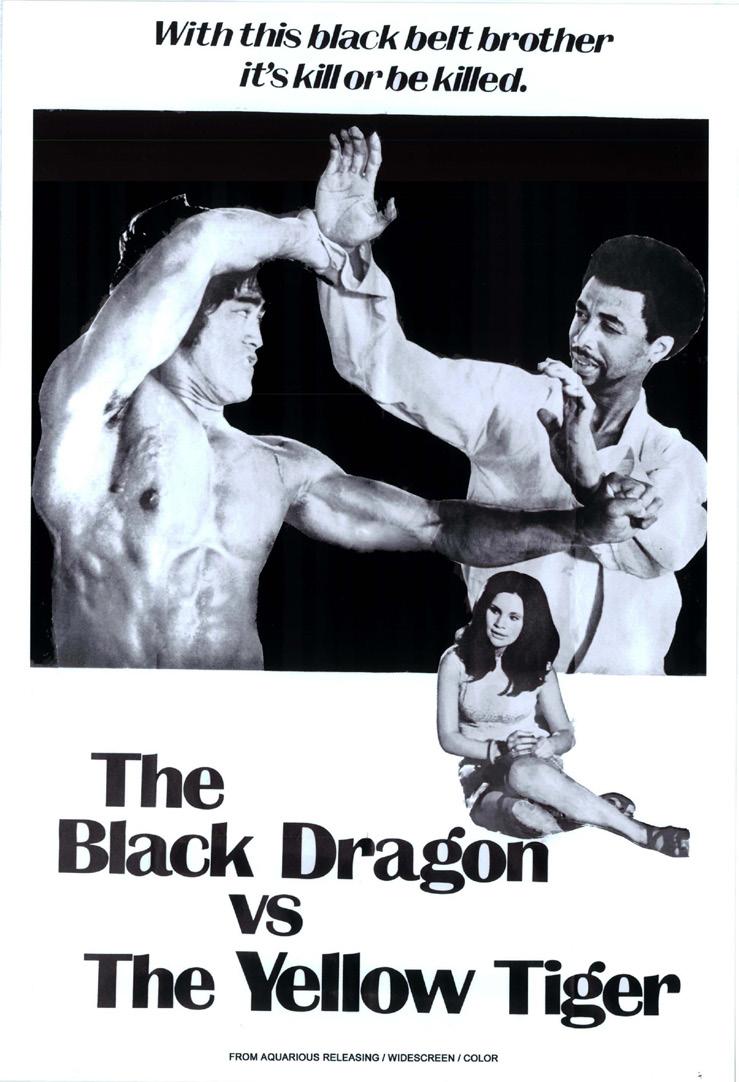
Not getting into a Taekwondo school was tough. Because none of the Koreans were willing to recognize my Kukkiwon certificate. Can you believe this was in 1974 or 1975. Most of these people have never had hadn't returned to Korea, they got here and the stuff that they knew when they arrived here. That's what they were teaching. So, matter of fact, they were not doing the Palgwe or Taegeuk patterns. When I was there, they were still doing ITF before they were making the transition. So, with that in mind, I felt that, my gosh, I still enjoyed the competition, but I wanted to open a school. I felt I needed some guidance. So back in those days, they had all these different magazines, Official Karate, and all these other things. So, the American Taekwondo Association ran ads in these publications. So, since I wasn't accepted by any of the Korean instructors, I said, Well, guys, maybe I'll look at this ATA thing, and this was after I moved to California. They said, Well, we have to send someone out to evaluate you. I replied, Oh, fine. You let me know what I need to do for that. So, I met some people in Hayward, California, God did the assessment. Next thing I know they tell me, You what we'll take you and by the way, you should test for a higher rank. You been a third degree too long. So, this was in 1977.

See next issue how a young warrior follows the road of master. It is a classic story, but one that changed Robinson’s life! Sr. Master Guy Edward Larke has dedicated his life from a young age to the pursuit of the martial arts, Asian culture and hoplology. It led him to Korea in 2000 and has lived there since then. He lives in Seongnam city with his wife GiRyung and son Alexander. He holds black belts in Teuk Gong Moo Sool, Taekwondo, Hapkido, Taekgyeon, Bon Kuk Kumdo, Korean kickboxing, Karate-do, Wushu, Cheonji-muye-do, and various other arts. Currently he teaches Taekwondo, Karate and Cheonji-muye-do full time in addition to writing for various magazines and running Kisa-Do Muye & Marketing. He can be contacted at kisadomuye@gmail. com .



